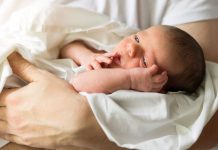The relationship between religion and science is complicated, and occasional controversies over healing through prayer have not helped. The tragedy of stories in which refusing medical treatment in favour of prayer ends in death is often exploited in the press to portray religion as rudimentary and backward. That is why it is all the more interesting that a case study attesting to the healing power of prayer has appeared in a medical journal containing peer reviewed studies.
Researchers at Indiana University and the Global Medical Research Institute in the United States have published a case study in the journal Complementary Therapies in Medicine in which the symptoms of a 16-year-old man suffering from gastroparesis were resolved after a “proximal-intercessory-prayer”, or PIP, uttered by a Pentecostal pastor known locally also as a healer. The results of the healing prayer were immediate and were maintained in 2019, more than six years after the medical miracle, the young man’s life being completely changed.
The disease
The young American (23 years old in 2019) was diagnosed with gastroparesis immediately after birth. Gastroparesis is a condition in which the spontaneous movement of the stomach muscles (motility) is affected, which prevents proper emptying of the stomach. Gastroparesis interferes with digestion, causes nausea, vomiting, and abdominal pain, disrupts the level of carbohydrates in the blood, and affects the absorption of nutrients in the body, causing weight loss. Gastroparesis can have several causes, including diabetes or surgery that can damage the vagus nerve that controls the stomach muscles, but in most cases the cause is unknown.
According to the young man’s medical files, he was suffering from idiopathic gastroparesis (when the cause of the disease is unknown), and his intolerance to oral feeding was so high that doctors were forced to perform a jejunostomy on him, so that, up to the age of 16, when he was suddenly cured, he depended on a tube system for introducing food/enteral nutrition and evacuating intestinal contents, being unable to ingest any food or liquid, including water.
Over the years, paediatric gastroenterologists tried various treatments, medications, and minerals to improve his condition, but visits to the doctor for tube aspiration and intolerance to oral feeding continued, according to his medical history. For 16 years, the symptoms remained severe, with no signs of improvement, and the chances given by doctors for the motility of the stomach muscles to be recovered were practically non-existent. In conclusion, no standard medical therapy was effective in relieving the symptoms of gastroparesis, which remained a chronic disease that was expected to cause problems for all his life, the study says.
The cure
On November 6, 2011, the young man (who remained anonymous in the study) visited a Pentecostal church with his parents. It should be noted that the young man grew up in a practicing Christian family, and at that time the family attended a non-denominational church on a weekly basis, which, among other things, believed that miracles did not still happen today, even though they did in Bible times.

In his message, the Pentecostal pastor recounted his own experience, in which God saved him after he came under a 22-ton truck, and his intestines were severed. The young man says that while listening, he felt a pulse in his abdominal region and promised God in his mind that if He healed him, he would dedicate himself to evangelism.
After the sermon, the pastor stopped to talk to the visiting family and compare his “battle wounds” with the boy, both having undergone several surgeries. At the end, he asked the family to gather together and, placing his hands on the boy’s shoulders, prayed that in the name of Jesus Christ, his stomach would be healed. During the prayer, the pastor insisted on the idea that he himself has no healing authority or power, but that he requested this miracle in the name and power of Jesus.
While the pastor was praying, the boy felt a kind of electric shock that started from his left shoulder and crossed his abdomen diagonally, with a sensation of a painful electric pulse. Despite the discomfort, the prayer was finished, and, for the first time in his life, the young man ate normally that night, without any complications. He is convinced that he was touched by the Holy Spirit.
For 16 years, the young man had been completely dependent on jejunostomy and could not tolerate any oral feeding. After the prayer, his intolerance completely disappeared. The gastroenterologist, who had been working on his case for 16 years, could not explain what happened, but confirmed that the symptoms disappeared and recommended removing the g- and j- tubes after three full months of oral feeding. In 2019, more than six years later, the young man was eating and digesting normally, no longer needing to go to the doctor or to take any drug treatment, and had no other medical problems.
Possible explanations
Researchers say in the study that they have not found any other similar precedent in medical literature. As the aetiology of the case remains unknown, medical experts have thought of several possible explanations. There are patients who have reported spontaneous improvement in the symptoms of this disease, but they have developed the disease following a severe viral infection, so that the symptoms of nausea, cramps, diarrhoea, and vomiting have become persistent, but over a period of time. Patients with this aetiology show a rather sudden improvement in symptoms about two years after the viral episode, but this aetiology and its cure does not suit the present case.
Gastroenterologists and paediatric surgeons who analysed the case also proposed the theory that prayer activated the autonomic nervous system, which is also called the vegetative nervous system, its activity being largely involuntary and continuous, controlling vital functions for the body, such as heart rate, blood pressure, rhythmic breathing, and even digestion. Previous studies have shown that prayer and meditation generate a response from this nervous system, including by activating the parasympathetic nervous system, which is also called the nervous system for rest and digestion, because, among other things, it is responsible for increasing intestinal activity.
Nevertheless, it must be said that the effectiveness of prayer in healing has been tested in studies and experiments with mixed results and almost impossible to compare. Some have studied entire churches that have prayed for patients, others have studied only a few people. Some prayed once, others ten times. Some studies used Buddhists, others Christians. The messages of the prayers were different each time, some praying for health, others praying for the fulfilment of the divine will.
Another explanation is the placebo effect, which has everything to do with an act of faith—the patient believes they will be cured by one treatment or another. It is proven by multiple case studies that even this mere belief can produce physiological changes in the body just like treatment with drugs. At the well-known Mayo Clinic in the United States, neurologist and radiologist David Kallmes performed an experiment in which he injected patients who had fractured vertebrae with a bone substitute. One month later, the results indicated the same pain relief in the control group, which had undergone simulated surgery. “Shocking to most people. Surprising to me,” says Kallmes of the results.
Christopher Spevak, a doctor specializing in pain and addiction at the Walter Reed National Military Medical Centre in the United States, works with veterans who have suffered serious injuries on the battlefield. His method involves taking opioids together with a stimulus that evokes a pleasant memory, such as mints or a certain perfume.

After a while, Spevak reduces the medication, but continues to offer the other stimulus. Spevak believes that through this Pavlovian method of inspiration, the brain is being trained to turn to the body’s own pharmacy when it receives the positive stimulus. “We have triple amputees, quadruple amputees, who are on no opioids. Yet we have older Vietnam vets who’ve been on high doses of morphine for low back pain for the past 30 years,” he says.
The placebo effect has been tested for gastroparesis compared to other drug treatments without convincing results. Tests showed that placebo effects “marginally improve overall gastroparesis-related symptom scores, but placebo effects did not improve gastric emptying” and “there is insufficient evidence that placebo effects can account for the observed resolution of symptoms, while the placebo effect cannot be completely ruled out,” the authors of the report say.
The variant cannot be ruled out due to the fact that it is very difficult to distinguish the placebo effect from the faith effect, Stanford researcher T.M. Luhrmann says. Any belief requires that human experience goes beyond what is material and observable, and studies over time have shown that belief in “symbolic healing” of the mind can have real physical effects on the body, but the results are mixed.
However, those who have achieved impressive results state that the brain has the ability to translate what people have lived and experienced at the level of their imagination into reality through mechanisms not yet understood. I previously told the story of Mike Pauletich, who, after receiving a placebo treatment, was cured of all the symptoms of his Parkinson’s disease, a unique case in medical literature. This despite the fact that the experiment was recorded as a failure, and the research was never resumed. Mike found out only two years later that he had been part of the control group, which had received a placebo. His case cannot be explained to this day. He says that he is not religious and doesn’t even pray and he got better because he believed the drug would work.
Of course, the fact that Mike does not believe that his miracle is divine in nature cannot override any divine intention unknown to him to heal him, or minimize the impact that healing has had on his life. Even in this case, however, it is not possible to say exactly what caused the healing, or how it happened.
Although the authors of the gastroparesis study treat the case as a healing after a proximal-intercessory-prayer (PIP), they cannot know if the healing process did not actually begin during the sermon, when the young man claims to have felt the first current in his abdomen and when he himself asked God to heal him.
The researchers base their study strictly on the subjectivity and memory of the young man in question, who told them how things went. For these reasons, the only correct conclusion expressed by the authors of the study is the recommendation to conduct controlled studies to show whether PIP experiences can really play a role in curing the symptoms of chronic diseases.
Eliza Vladescu is a communication specialist and previously was part of the permanent ST.N team. She currently works as an online communication consultant.

















